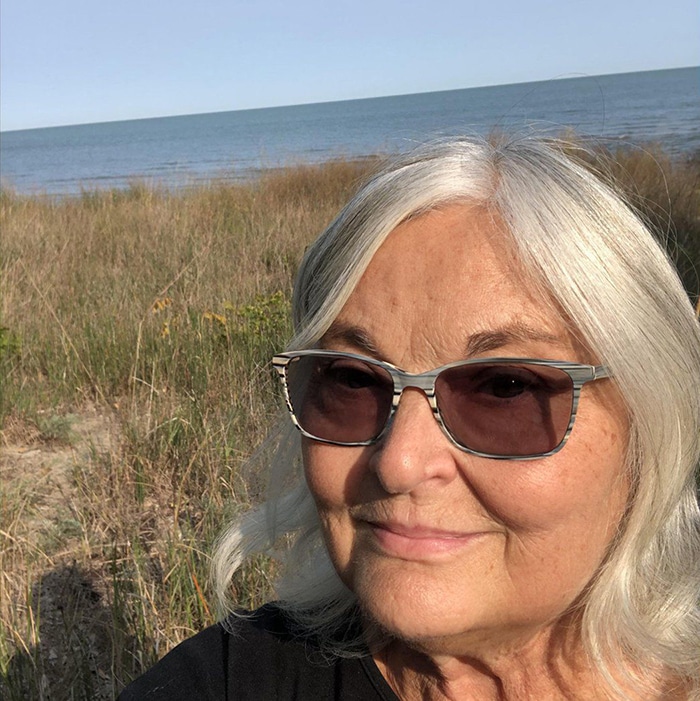
By Bird Bouchard, Local Journalism Initiative
The Ridgetown Independent
A local woman says she may have seen the distress flares fired by a sailor the night he vanished on Lake Erie. But when she reported the incident to the Canadian Coast Guard, she says she wasn’t taken seriously.
Reginald Fisher, of Dutton, went missing Sept. 17 after he didn’t return from his sailing trip out of Port Glasgow, just east of Chatham-Kent. Ontario Provincial Police (OPP) recovered his abandoned sailboat the next day but saw no sign of the 77-year-old.
His body was discovered last week near Port Burwell.
Rosemary Mitton, who owns a cottage on the north shore of Lake Erie not far from Rondeau Provincial Park, said she might have seen Fisher’s flares that night.
“I didn’t take note of the time, I didn’t expect it to be any big deal,” said Mitton. “And when I went down, I saw the end of a flare, and it was lighting up the water – significantly reflecting on the water.”
The 66-year-old woman quickly went back into the house to find the 1-800 number for the Canadian Coast Guard to report what she saw.
“I spoke to a French Canadian man, and I told him we were on the north shore of Lake Erie, we were at Rondeau and that I was seeing a flare on the lake. It was West of Clearville, but it was east of Rondeau. It was well within the horizon, and the lake was flat.”
According to Trevor Reid, Senior Public Affairs officer for the Canadian Armed Forces, if a member of the public calls the marine search and rescue telephone line (the 1-800 number called by Mitton), the Joint Rescue Coordination Centre receives the call.
The centre in Trenton, which received the call from Mitton, has received approximately 3,000 calls for Joint Rescue Coordination Center this year, according to Reid.
“All calls receive the full attention of both RCAF and CCG staff at JRCC, and are taken very seriously, as the safety of mariners in distress is our main priority,” said Reid. “All staff at JRCC are highly trained professionals in both emergency response and search and rescue situations.”
The JRCC coordinates marine search and rescue and is staffed with both the Coast Guard and Royal Canadian Air Force (RCAF) personnel.
Mitton said the man on the phone asked her what colour the flare was. Mitton began to explain the colour of the flare. She described it as the colour of fire, an orangey-red with a tint of gold.
“He said, ‘Oh no, there’s nobody out there. That’s our flares,’” said Mitton. “He was so convinced that it was his own.”
As Mitton recalls, she was informed there was a boat taking on water at Port Burwell. She was also informed of flares being dropped at Port Burwell.
“I thought to myself, ‘that’s a long ways away for us to see it, but the water can play tricks’,” said Mitton. “So I said the flares are going up. He told me they were dropping flares at Port Burwell.”
Mitton consoled herself and went to bed.
As she recalls, that night, the wind changed to the northeast.
“It was a very, very rough lake – wild. I thought if there’s anybody out there, they’re not going to make it now,” said Mitton.
“I think what it was was a sad coincidence that we had a person in distress sending up flares, and they had somebody in Port Burwell that they were dropping to,” Mitton said.
Mitton and her husband Craig have lived there for 46 years. She knew Bort Burwell was 80 miles away and did not think it could be seen.
According to Reid, the flares dropped as part of the Port Burwell rescue are known as parachute flares. They are dropped from around 5,000 feet up in the air. Depending on the settings, they can last three to five minutes.
“Depending on the atmospheric conditions, weather and whatnot, they can be seen for dozens, if not hundreds of kilometres, depending on what factors are at play,” said Reid.
Mitton said she kept insisting she knew what she saw. However, she felt she was not taken seriously.
“We can’t see Port Burwell from here. We’re in a little Cove down here. I had my charts up on my computer. I told him that there was an Algoma freighter and a dark freighter about the shipping channel. But there was nothing else on our screen,” said Mitton.
According to Reid, a review of the incident on the night of Sept. 17, including a review of the telephone transcripts, confirms all procedures were followed correctly.
“It also confirms all routine questions, and then some, were asked about the situation in order to determine what was being witnessed. Based on all answers to the questions, the centre was able to corroborate the description of events to the Port Burwell rescue that was occurring,” said Reid.
Mitton can’t help but wonder what more she could have done to help.
She recalls many instances throughout the 46 years she has lived near the water where she was able to help people.
“We know the water. We have an aluminum boat on the shore, which we have launched many times to bring people in who went out too far on an inner tube or, they were inexperienced sailors,” said Mitton.
She doesn’t have a lighthouse, there’s no Harbour Master, and it was too dark to go out in the aluminum boat as she doesn’t have searchlights.
But this time around, despite her attempts, and numerous calls from neighbours, a life was taken by Lake Erie.
“If the Coast Guard doesn’t believe us, and the 911 calls that were made, and they don’t believe us, then who do we call? Who would believe us?” questioned Mitton. “Time is of the essence.”






